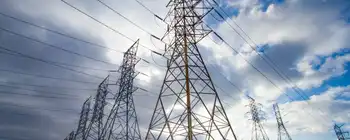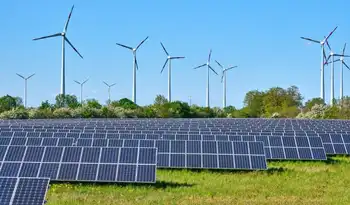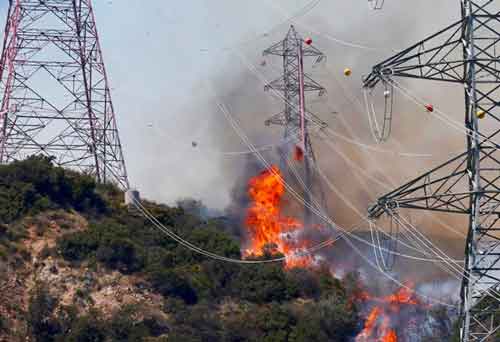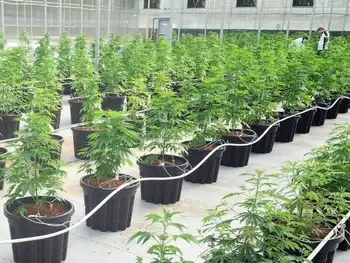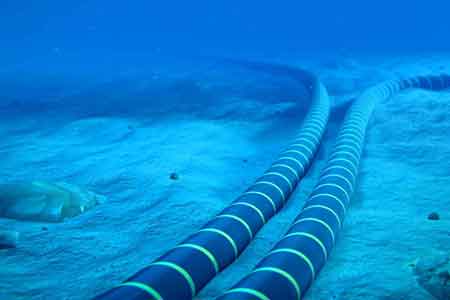Meltdown threat forces re-examination of renewables
By Reuters
Protective Relay Training - Basic
Our customized live online or in‑person group training can be delivered to your staff at your location.

- Live Online
- 12 hours Instructor-led
- Group Training Available
Japan, one of the world's top nuclear power generators and a key advocate of the technology, plans a review of policy to tap sources such as solar. China too may double its target for photovoltaic capacity over the next five years, and Taiwan is studying cutting nuclear output. Germany and Switzerland are either shutting older reactors or suspending approvals.
Investors are already betting on the change, carrying global benchmark indexes to their highest in 14 months.
The global FTSE Cleantech index has spiked more than 8 percent since Japan's earthquake struck on March 11,beating a rise of around 2 percent in the MSCI all-country world stock index. The WilderHill New Energy Global Innovation index of alternative energy stocks has gained around 12 percent.
"If nuclear contributes less, then something has to make up the difference and that could very easily be renewables," Paul Hanrahan, president and chief executive of New York-listed global power firm AES Corporation said in Singapore.
Giving a fillip to the sector, China, the world's biggest energy consumer, has already announced plans to raise the price of power generated from renewable sources over the next two years to help encourage investments.
China's renewable energy law obliges grid firms to buy all the renewable electricity produced in their region, even though it is more expensive than coal-fired power, but it also allows them to charge "additional" fees for clean electricity sources.
Besides trying to double solar power capacity, renewable energy officials have urged more government support, saying promotion of clean energy sources could help fill any likely supply gap if safety concerns were to slow China's nuclear program.
"Nuclear power can probably improve China's energy security, but whether it improves overall national security is something that needs to be thought about deeply," Li Hejun, chairman of the China New Energy Chamber of Commerce, which lobbies on behalf of the renewable sector.
After the Japanese nuclear disaster, German Chancellor Angela Merkel declared a three-month moratorium on an extension her government had given last year to 17 nuclear reactors, carrying their lifespan an average of 12 years beyond a prior 2022 cut-off date.
Taiwan's state-run Taipower also said it was studying plans to cut nuclear power output.
"Whatever their exact outcome, the Fukushima events are likely to shift the energy policy balance toward renewables," Pricewaterhouse Coopers said in a report on March 28.
Swiss Energy Minister Doris Leuthard suspended the approvals process for three nuclear power stations so safety standards can be revisited after the crisis in Japan.
Robin Batchelor, a fund manager at BlackRock responsible for $8.2 billion in energy-related funds, said renewables were not really in focus for fund managers prior to the crisis in Japan, adding that the disaster may prompt countries to have a rethink.
In Europe, the bloc's Renewable Electricity Directive missed a 2010 target of a 21 percent share for renewable energy out of total electricity generated, and now aims for it to account for 20 percent by 2020, the body said on its website.
Industry executives and experts say the events unfolding in Japan will help speed the push toward this goal. "The ball is already rolling here in Europe as you have seen with the way the Green Party is advancing in Germany," said Thorbjoern Jensen, oil market analyst at Global Risk Management. "You will certainly see a bigger push on the part of all governments here in Europe to diversify their slate for power generation."
In 2010, nearly half the value of power sector deals concluded in the renewables sector globally originated from Europe. The overall value based on deals done in the region was just over $13 billion, according to PwC.
Hydro accounts for around 13 to 14 percent of the total power generated in Asia Pacific renewables, excluding hydropower, will account for only 2.3 percent in 2010 and are only expected to increase to 4 percent by 2030.
Wind, solar and biomass power are the largest contributors to the renewable contribution.
The renewable share of world electricity generation is expected to increase to 23 percent in 2035 from 18 percent in 2007, supported by high oil prices and government incentives, according to a U.S. Department of Energy report last December.
The bulk of that increase in renewable electricity supply will be fueled by hydro and wind power, the department said.
"Renewables are a big player in the mix, there will still be other sources of energy but the share of renewables will increase," said Evgeny Fedorov, chief executive of EuroSibErnego, Russia's largest private power generator and one of the world's biggest hydroelectric power players.
Still, much as governments around the world talk about boosting the renewable energy sector, an immediate surge in spending flows is unlikely because projects will take time to prepare and get off the drawing board, analysts said.
Investment in renewable energy across the globe was expected to maintain the momentum seen in 2010, when the number of deals in green energy projects rose 66 percent versus the previous year, the Pricewaterhouse Coopers report showed. Overall investments in clean energy, excluding research and development funding, in the Group of 20 major economies rose 33 percent last year to $198 billion amid recovery from the recession, according to the report.
China was ranked ahead of Germany and the United States with private investments in the sector pegged at $54.4 billion.
Cost may be another factor discouraging large-volume spending in renewables. Renewable projects on which work may have begun, and will be ready in the next five or so, will be far more expensive to run than thermal power projects.
The U.S. Energy Information Administration says that in 2016, onshore wind, the least expensive renewable energy source, will be 80 percent more expensive to run than a combined cycle, gas-fired electricity.
But conventional nuclear power will still be the lowest price energy option in 2016, according to an EIA projection issued in December 2010.
That is probably part of the reason for South Korea, a major global supplier of nuclear plants, to carry on with its nuclear plans despite the crisis at its neighbor Japan.
Nuclear power accounts for 31.4 percent of South Korea's electricity generation needs, and the world's fifth-largest oil importer has a target to increase that to 48.5 percent by 2024.
It has 7 reactors under construction, with plans to build 6 more and bring to 34 the number on-stream by 2024.
But renewable power must battle reliability concerns, compared with thermal or nuclear power, as supplies of sunlight, wind or water are not always steady, a hurdle the sector must overcome before it can displace conventional sources.
"Renewables, yes, to a certain extent you can use, but it can only supplement, it cannot replace," said Che Kalib Mohamad Noh, chief executive of Malaysian power company Tenaga Nasional, adding that conventional fossil fuels and nuclear power would play a pre-eminent role for the foreseeable future.





